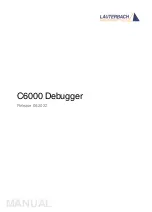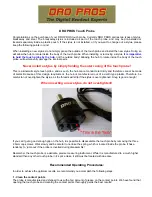
38
Phenomena
Factor
Countermeasure
2. Remote controller display operates
normally and the unit performs
heating operation, however, the
capacity cannot be fully obtained.
1
Linear expansion valve fault
Opening cannot be adjusted well due to linear expan-
sion valve fault.
2
Refrigerant shortage
3
Lack of insulation for refrigerant piping
4
Filter clogging
5
Heat exchanger clogging
6
Air duct short cycle
7
Bypass circuit of outdoor unit fault
1
Discharging temperature and indoor heat
exchanger temperature does not rise.
Inspect the failure by checking discharg-
ing pressure.
Replace linear expansion valve.
2
If refrigerant leaks, discharging tempera-
ture rises and LEV opening increases.
Inspect leakage by checking the tem-
perature and opening.
Check pipe connections for gas leakage.
3
Check the insulation.
4
Open intake grille and check the filter.
Clean the filter by removing dirt or dust
on it.
5
If the filter is clogged, indoor pipe tem-
perature rises and discharging pressure
increases. Check if heat exchanger is
clogged by inspecting discharging pres-
sure.
Clean the heat exchanger.
6
Remove the blockage.
7
Check refrigerant system during opera-
tion.
3.
1
For 3 minutes after temperature
adjuster turns off, the compres-
sor will not start operating even if
temperature adjuster is turned on.
2
For 3 minutes after temperature
adjuster turns on, the compressor
will not stop operating even if tem-
perature adjuster is turned off.
(Compressor stops operating
immediately when turning off by
the remote controller.)
12
Normal operation
(For protection of compressor)
12
Normal operation
1. Remote controller display operates
normally and the unit performs cool-
ing operation, however, the capacity
cannot be fully obtained. (The air
does not cool well.)
1
Refrigerant shortage
2
Filter clogging
3
Heat exchanger clogging
4
Air duct short cycle
1
If refrigerant leaks, discharging tempera-
ture rises and LEV opening increases.
Inspect leakage by checking the tem-
perature and opening.
Check pipe connections for gas leakage.
2
Open intake grille and check the filter.
Clean the filter by removing dirt or dust
on it.
3
If the filter is clogged, indoor pipe tem-
perature rises and discharging pressure
increases. Check if heat exchanger is
clogged by inspecting discharging pres-
sure.
Clean the heat exchanger.
4
Remove the blockage.
9-4. TROUBLESHOOTING BY INFERIOR PHENOMENA
















































